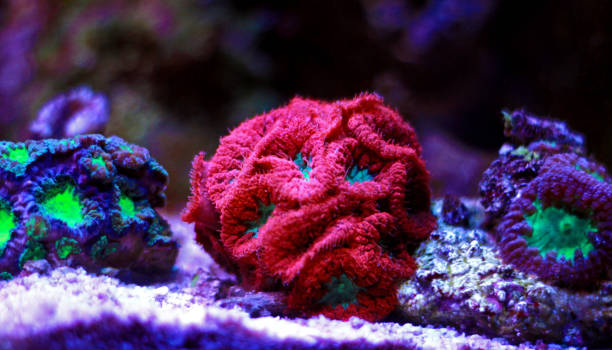In the mesmerizing world of reef tank enthusiasts, the selection of corals is akin to composing a symphony of colors, shapes, and textures. As the conductors of our aquatic realms, we seek the finest virtuosos to create a harmonious crescendo of life. In this article, we embark on a journey to discover the best corals for your reef tank, selecting species that contribute their unique melodies to the underwater orchestration.
The Overture: Understanding the Role of Corals in Reef Tanks:
Corals are the backbone of a thriving reef tank, providing shelter, sustenance, and visual allure. The diversity of coral species allows hobbyists to curate a living masterpiece within the confines of an aquarium. Choosing the best corals involves considering factors such as lighting, water quality, and compatibility, creating a balanced ensemble that fosters both aesthetic appeal and the well-being of the tank’s inhabitants.
Acanthastrea lordhowensis: The Symphony of Symmetry:
Known as the Acan Lord or simply Acan, Acanthastrea lordhowensis is a marvel of color and symmetry. With its distinctive round polyps and a palette ranging from deep reds to vibrant greens, the Acan adds a symphony of visual richness to the reef tank. These LPS (Large Polyp Stony) corals are relatively hardy and well-suited for both novice and experienced reef keepers.
Sarcophyton spp.: Soft Coral Serenade:
For those seeking the gentle sway of soft corals, the Sarcophyton genus, commonly known as Leather Corals, offers a soothing serenade. Their undulating forms and earthy hues create a tranquil atmosphere within the tank. These soft corals are prized for their adaptability and are excellent choices for beginners looking to introduce elegance and movement to their underwater landscape.
Pocillopora damicornis: The Staccato of Branching Elegance:
Pocillopora damicornis, often referred to as “Pocci,” introduces a staccato of branching elegance to the reef tank. These SPS (Small Polyp Stony) corals display intricate branching structures and come in a spectrum of colors, from delicate pastels to vibrant neons. With proper care and attention to water quality, Pocillopora species thrive, adding dynamic height and architectural interest to the tank.
Ricordea florida: Vivid Polyp Palette:
Ricordea florida, commonly known as Ricordea Mushrooms, bring a vivacious polyp palette to the reef tank. With their mushroom-like appearance and an array of colors including blues, greens, and oranges, Ricordea species create a striking visual display. These corals are favored for their low-maintenance nature and are suitable for reef keepers of all experience levels.
Harmony in Diversity: Crafting a Reef Tank Ensemble:
The art of selecting the best corals for your reef tank lies in achieving harmony through diversity. Mixing various coral types, such as LPS, soft corals, and SPS, allows for a visually stunning and ecologically balanced aquarium. Consider the specific needs of each coral species, including lighting requirements and placement within the tank, to create an ensemble where every coral plays its part in the symphony of underwater life.
Conclusion:
As you embark on the journey of curating your best coral for reef tank, envision it as a grand stage where corals take center stage in an aquatic symphony. Whether you’re captivated by the round polyps of Acanthastrea lordhowensis, the gentle sway of Sarcophyton soft corals, the branching elegance of Pocillopora damicornis, or the vivid palette of Ricordea florida, each coral brings its unique melody to the composition. With careful consideration and a passion for the underwater arts, your reef tank can become a masterpiece, resonating with the harmonious beauty of the ocean’s finest virtuosos.
















Comments